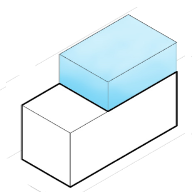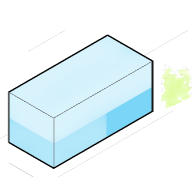Development Opportunity for
205 Collins St, San Francisco, CA
108% Potential
($2,898,257 Untapped Value)
This property is a Other currently used as a Multi-Family Residential. Property is on a lot of 9,375 sqft and has a conditioned area of 18,274 sqft.
Development Options for
205 Collins St, San Francisco, CA
What are the local zoning regulations for 205 Collins St ?
NCD-GEARY BOULEVARD (GEARY BOULEVARD NEIGHBORHOOD COMMERCIAL DISTRICT)
The Geary Boulevard Neighborhood Commercial District is located along Geary Boulevard between Masonic and 28th Avenues. It is a linear district located along a heavily trafficked thoroughfare which also serves as a major transit route. In addition to providing convenience goods and services to the surrounding neighborhood, the District offers a wide variety of comparison and specialty goods and services to a population greater than the immediate neighborhood.
Housing development in new buildings is encouraged above the second story. Existing residential units are protected by limitations on demolitions and upper-story conversions.
The Geary Boulevard Neighborhood Commercial District, situated along Geary Boulevard between Masonic and 28th Avenues, functions as a dynamic linear hub with substantial traffic and significant transit connectivity. Offering convenience and a diverse array of goods, the district serves both local residents and a broader population. Building standards accommodate moderately large commercial structures while safeguarding rear yards at residential levels. The district promotes a varied commercial landscape with a focus on neighborhood-serving businesses. Housing development above the second story is encouraged, preserving existing residential units, and Accessory Dwelling Units align with zoning regulations, enhancing the district's vibrancy.
Permitted Residential Uses: ADU, intermediate length occupancy, single room occupancy, student housing, residential uses, dwelling units, senior housing, and group housing and homeless shelters.
Permitted Non-Residential Uses: Walk-up facility, agriculture (neighborhood), arts activities, general entertainment, movie theater, child care facility, community facility, public facilities, residential care facility, social service or philanthropic facility, animal hospital, bar, liquor store, massage establishment, massage foot/chair, restaurant, financial services, fringe financial services, limited financial services, retail professional services, trade shop and trade office.
What is the maximum height for 205 Collins St ?
40-X
No portion of a dwelling can exceed a height of 40 feet, except that the permitted height has to be reduced to 35 feet where the average ground elevation at the rear line of the lot is lower by 20 or more feet than at the front line. The height is measured by taking a point at the centerline of the building or, where the building steps in relation to a street that is the basis for height measurement. Separate points need to be taken at the centerline of each building step. The upper point is the highest point on the finished roof in the case of a flat roof, and the average height of the rise in the case of a pitched or stepped roof.
What are the ADU regulations for 205 Collins St ?
ADU eligible
Accessory Dwelling Units (ADUs), also called secondary units, in-law units, or cottages, are units added to existing and new residential buildings. Adding an ADU to your property can provide several benefits, such as providing housing for family members, simplifying your lifestyle, and increased financial flexibility.Learn more about building ADU in this article
What neighborhood is 205 Collins St located in?
Lone Mountain, San Francisco
Lone Mountain is a historic hill in west-central San Francisco, California and the site of the private University of San Francisco (USF) – Lone Mountain Campus, which in turn was previously the San Francisco Lone Mountain College for Women. It was once the location of Lone Mountain Cemetery, a complex encompassing the Laurel Hill, Calvary, Masonic, and Odd Fellows Cemeteries.
Lone Mountain is one of California's historic hills. The hill is near to the former location of the Odd Fellows Cemetery, Masonic Cemetery, and Greek Orthodox Cemetery. The graves in these cemeteries, along with most graves in San Francisco, were moved to Colma by the 1940s. Lone Mountain is also home to the Angelo J. Rossi Playground and Rossi Pool at Arguello Boulevard and Anza Street.
Lone Mountain is also known as "University Terrace" because of the terraces that connect the two USF campuses.




